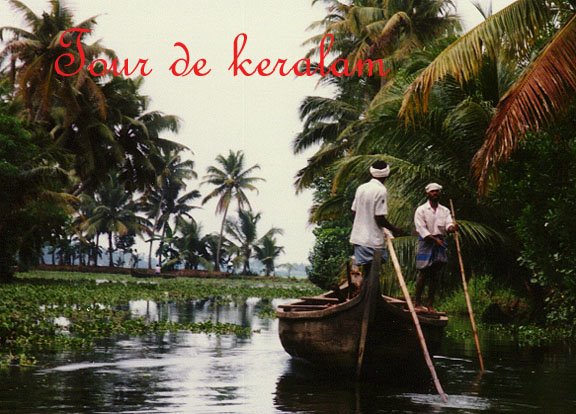Beautyful places to vist in kearala-Chalakudy
Chalakudy is a city and a municipality in Thrissur district in the state of Kerala, India.
Athirappilly is thirty kilometres from Chalakudy, which is en route to the waterfalls there. Also on this route are two water theme parks: Dream World and Silver Storm.
The name "Chalakudy" is derived from the word "Shalakudy", meaning a place where sacrifices are made
Interesting places around Chalakudy
Chalakudy River (half a kilometre from town, to the south on NH-47 highway); it has one of the highest fish diversities in India(second in the whole india)

Athirappilly is thirty kilometres from Chalakudy, which is en route to the waterfalls there. Also on this route are two water theme parks: Dream World and Silver Storm.
The name "Chalakudy" is derived from the word "Shalakudy", meaning a place where sacrifices are made
Interesting places around Chalakudy
Chalakudy River (half a kilometre from town, to the south on NH-47 highway); it has one of the highest fish diversities in India(second in the whole india)

Divine Retreat Centre, Muringoor. Christian prayer centre, situated near the railway station.
Popular Mission Center, Potta - previously known as Divine Retreat Centre, Potta. A brother concern of Divine Retreat Center (1km North of Town on NH-47 highway).The annual Potta Bible Convention takes place here in January every year, which attracts 1 million Christians from all over the world.
Popular Mission Center, Potta - previously known as Divine Retreat Centre, Potta. A brother concern of Divine Retreat Center (1km North of Town on NH-47 highway).The annual Potta Bible Convention takes place here in January every year, which attracts 1 million Christians from all over the world.

Dream World Water Theme Park (10km east of Town; en route to the Athirappally water falls).
Thumboormuzhy Check Dam & Garden (15 km east of Town; en route to the Athirappilly waterfalls).
Oil palm Plantation (17km from Town; en route to the Athirappilly waterfalls.
Silver Storm Water Theme Park (19km east of Town; en route to theAthirappilly waterfalls).
Athirappilly Waterfalls (33km east of Town).
Ezhattumukham (7km from Athirappilly; on the Angamaly route via Vettilappara bridge).
Charpa Falls ( The enchanting but lesser known Charpa falls, which plunges on to the road during the monsoon, is a sight to watch and enjoy.) (31km east of Town; after Athirappilly waterfalls).

Vazhachal falls and Resorts (35km east of Town; after Athirappilly waterfalls).
Anakkayam ( About 37km from Chalakudy on the Athirappilly route, Anakkayam means the "Elephant pit". It is noted for a lake with cool and placid waters. The place is a forest untouched by human encroachments and is a haven for those who wish to escape from concrete jungles. It attracts the visitor with its bubbling streams, natural rock formations and flora).
Peringalkuthu Hydro Electric Project Dam (39km from Town; in the direction of the Athirappilly water falls).
Sholayar Dam Hydro Electric project.
Parambikulam Wildlife Sanctuary.
St. Mary's Forane church in Chalakudy is one of the piligrim centers held sacred in the name of Mother Mary. Many piligrims visit the church and the holy land.
OMPH church, West Chalakudy .
St. Antony's church Perambra -Thrissur
St. Mary's church Koratty

Kannampuzha Temple
How To Reach
Chalakudy is conveniently connected by air, rail and road. Located very close to the National Highway 47, it is 30 km south of Thrissur, 45 km north of Ernakulam, and 22 km from Cochin International Airport (Nedumbassery), which is accessed by many major airlines, including British Airways. Chalakudy railway station is just two kilometers away, Enquiry number ( 0480-2701368).
Chalakudy Town –Vazhachal road (state highway- 21) is a rubberised two- lane road.
courtsey-Anil Devassye












